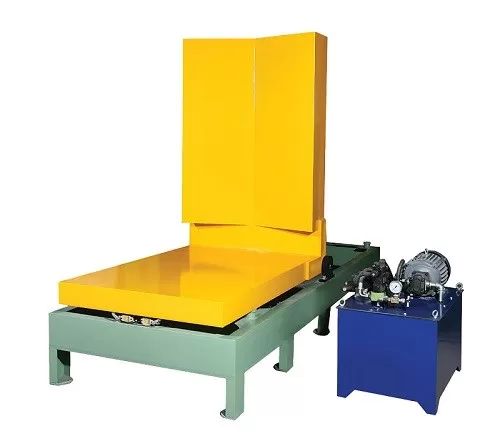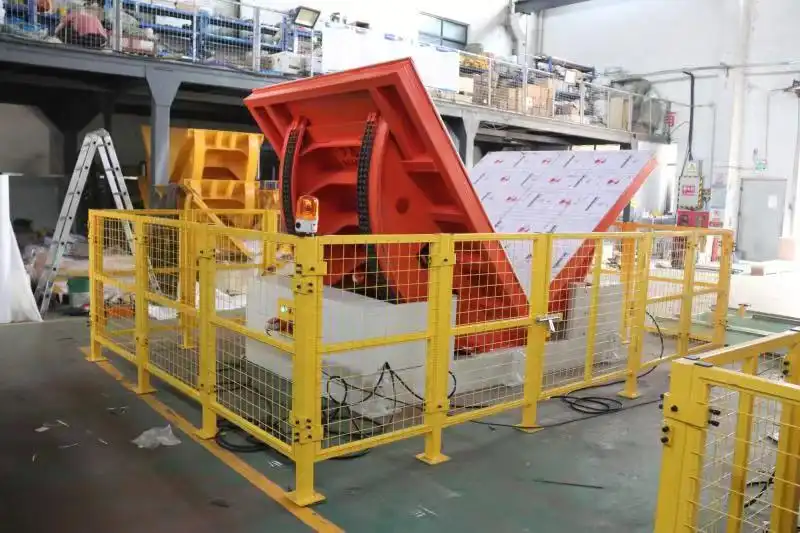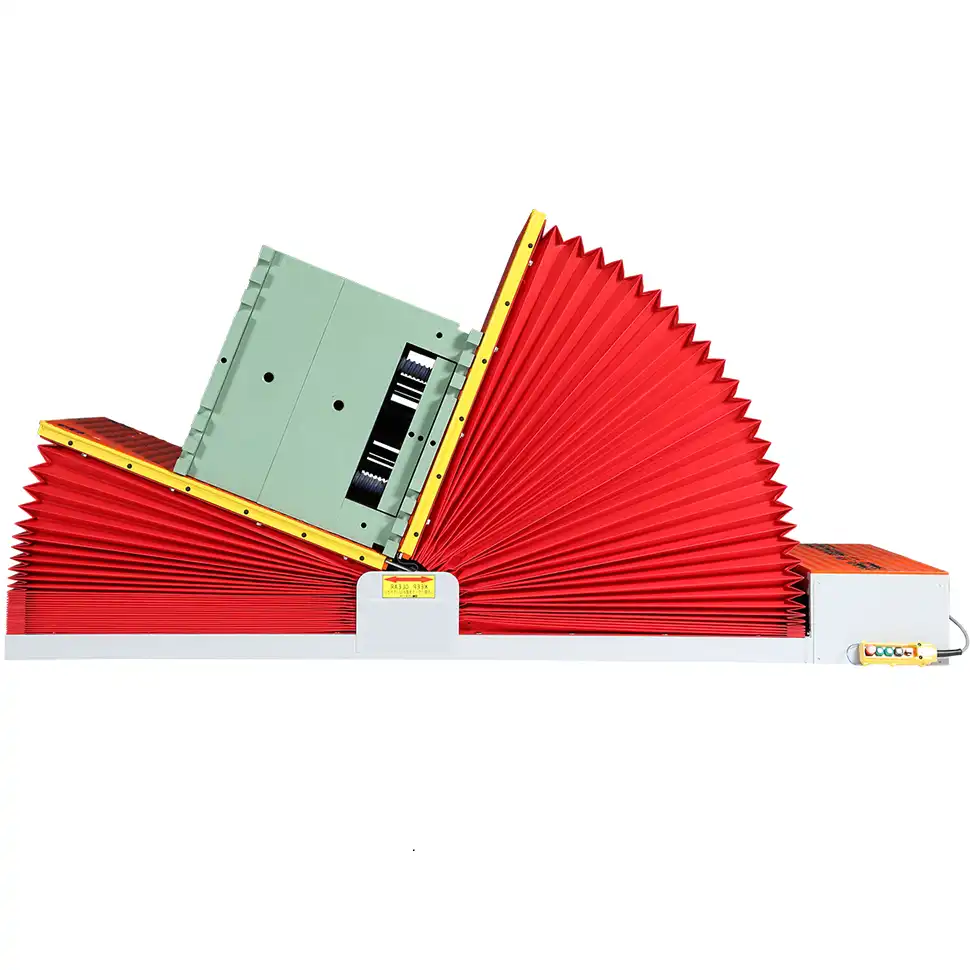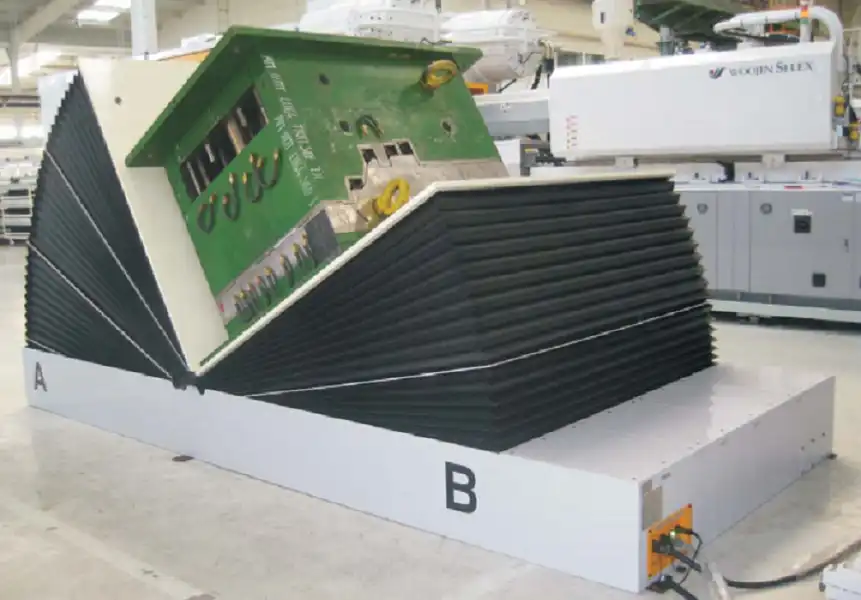1. Verify Power Safety Before Every Operation
Before operating the flipping machine, thoroughly verify the safety and integrity of its power source. This equipment typically operates on high-voltage systems (e.g., 308V), presenting significant electrical hazards if not managed correctly.
Key Safety Checks:
- Inspect Power Cables: Look for any signs of wear, fraying, or damage on all power cords and connections. Ensure they are securely plugged in.
- Check Control Panel: Confirm that all power indicators and safety lights on the control panel are functioning as expected.
- Clear Electrical Areas: Strictly prohibit standing on or placing objects near the machine's electrical cabinets or high-voltage components. Contact can lead to severe injury.
- Grounding Verification: Ensure the machine is properly grounded according to manufacturer specifications and local electrical codes.
Performing these checks before each use is crucial for preventing electrical shocks, equipment damage, and operational failures, contributing to a safer work environment.

2. Ensure Stable and Level Ground Conditions
Operating the flipping machine requires a stable, perfectly level surface to ensure safety and prevent accidents. Uneven or unstable ground can compromise the machine's balance, especially when handling heavy or large loads.
Why Stable Ground Matters:
- Prevents Tipping: Heavy loads shift the center of gravity. Uneven surfaces significantly increase the risk of the machine tipping over during the flipping process.
- Reduces Mechanical Stress: Operating on an unstable base puts uneven stress on the machine's frame, bearings, and drive components, potentially leading to premature wear or failure.
- Ensures Smooth Operation: A level surface allows for controlled, predictable movement, crucial for precise load handling.
Actionable Steps:
- Inspect Operating Area: Before positioning the machine, check the floor for cracks, slopes, debris, or weakness.
- Use Support Plates (If Necessary): On slightly uneven surfaces, appropriately rated support plates might distribute the load, but a permanently level foundation is ideal.
- Consider Anchoring: For stationary flipping machines, ensure they are securely anchored to the floor as per manufacturer guidelines.
Maintaining a suitable operating surface is fundamental for the safe and effective use of heavy flipping machinery.
3. Maintain a Clear Operating Zone Around the Machine
A clean and unobstructed area around the flipping machine is essential for safe and efficient operation. Clutter poses significant risks during the dynamic movement of the machine and its load.
Importance of a Clear Zone:
- Operator Safety: Provides clear pathways for operators to move freely and maintain a safe distance during operation. Prevents trip hazards.
- Prevents Collisions: Ensures the load and machine parts have ample space to move without hitting stored materials, tools, or other equipment.
- Facilitates Inspection: Allows easy visual inspection of the machine and load during the flipping cycle.
- Emergency Access: Keeps access to controls and emergency stop buttons clear.
Daily Practices:
- Define the Zone: Clearly mark the required operating clearance around the machine.
- Remove Obstructions: Before starting work, remove all tools, materials, debris, pallets, and unnecessary items from the defined zone.
- Organized Storage: Implement procedures for storing items away from the machine's operating footprint.
A clutter-free environment minimizes the risk of accidents, protects the equipment and materials, and enhances overall workflow efficiency.

4. Power Down the Machine After Each Use
Consistently switching off the flipping machine's main power supply after completing operations is a critical safety and energy conservation practice.
Benefits of Powering Down:
- Prevents Accidental Activation: Eliminates the risk of the machine starting unintentionally due to control errors or accidental button presses.
- Reduces Electrical Hazards: Minimizes exposure to live electrical components when the machine is unattended.
- Conserves Energy: Reduces passive energy consumption, contributing to lower operational costs.
- Component Longevity: Can reduce unnecessary wear on certain electrical components like contactors or displays.
Standard Procedure:
- Follow the manufacturer's recommended shutdown sequence.
- Ensure the main power disconnect is switched off, especially at the end of a shift or before leaving the machine unattended for extended periods.
- Incorporate this step into the standard operating procedures (SOP) checklist for operators.
This simple habit significantly enhances workplace safety and contributes to responsible energy management.
5. Know and Use the Emergency Stop (E-Stop) Button
The emergency stop button is a vital safety feature designed to immediately halt all machine movement in a critical situation. All operators must be thoroughly familiar with its location and function.
When to Use the E-Stop:
- Load Instability: If the load shifts unexpectedly or appears unstable during the flip.
- Operator Hazard: If anyone is in immediate danger of being struck or caught by the machine or load.
- Machine Malfunction: If the machine exhibits unexpected movement, sounds, or operational errors.
- Obstruction Detected: If an object interferes with the machine's path during operation.
Key Points:
- Accessibility: Ensure the E-stop button(s) are always easily accessible and never obstructed.
- Training: Regularly train operators on the location and proper use of the E-stop. Emphasize it is for emergencies only, not routine stopping.
- Testing: Periodically test the E-stop function as part of the machine's safety inspection protocol (follow manufacturer guidance).
Proper understanding and use of the emergency stop can prevent serious accidents and minimize equipment damage in hazardous situations.
6. Perform Daily Cleaning of the Machine Exterior
Regular cleaning of the flipping machine's exterior surfaces is a simple yet effective maintenance task that supports safety and longevity.
Reasons for Daily Cleaning:
- Remove Debris: Dust, dirt, grease, and material residues can accumulate on surfaces and potentially interfere with sensors, switches, or moving parts if ingress occurs.
- Improve Inspection: A clean machine makes it easier to spot leaks, damage, loose parts, or wear during routine visual checks.
- Prevent Slips: Removes oil or fluid residues that could create slip hazards on or around the machine.
- Maintain Professionalism: Keeps the equipment looking well-maintained.
Cleaning Guidelines:
- Use soft cloths, brushes, or compressed air (use appropriate PPE).
- Avoid spraying water or cleaning fluids directly onto electrical components, controls, or vents unless specified by the manufacturer.
- Wipe down operator controls and handles.
- Focus on areas where debris tends to collect, such as near the base or moving mechanisms.
Incorporate exterior cleaning into the end-of-shift procedures to ensure the machine is ready and safe for the next operation.
7. Restrict Electrical Control Inspections to Certified Technicians
The electrical control systems of flipping machines are complex and operate at high voltages. Accessing or modifying these systems requires specialized training and knowledge.
Why Professional Expertise is Crucial:
- Safety: Untrained personnel risk severe electric shock or causing short circuits that could lead to fire or equipment failure.
- Correct Diagnosis: Certified technicians have the diagnostic tools and expertise to accurately identify and resolve electrical issues.
- Compliance: Ensures repairs and maintenance comply with safety standards and manufacturer specifications.
- Warranty Preservation: Unauthorized electrical work often voids manufacturer warranties.
Policy:
- Strict Access Control: Only technicians certified by the manufacturer or a qualified third party should open electrical panels or perform maintenance on control systems.
- Scheduled Inspections: Arrange for periodic inspections and preventative maintenance of electrical components by qualified professionals.
Never allow untrained staff to attempt electrical repairs or diagnostics on the flipping machine.

8. Prohibit Repairs by Non-Professional Personnel
Attempting mechanical or structural repairs on a flipping machine without proper training and authorization can lead to serious safety hazards and costly damage.
Risks of Unauthorized Repairs:
- Incorrect Procedures: Using improper tools or techniques can damage components or lead to faulty repairs.
- Compromised Safety: An incorrect repair could cause the machine to malfunction unexpectedly during operation, endangering personnel and loads.
- Further Damage: Attempts to fix one problem might inadvertently create others, leading to more extensive and expensive professional repairs later.
- Liability Issues: Accidents resulting from unauthorized repairs can create significant liability for the company.
Best Practice:
- Report Issues Promptly: Train operators to report any malfunctions, strange noises, or damage immediately.
- Use Qualified Technicians: Ensure all repairs, adjustments, and part replacements are performed by personnel with documented training and experience on the specific type of flipping machine.
- Follow Manufacturer Recommendations: Adhere to the manufacturer's guidelines for maintenance schedules and repair procedures.
Relying on trained professionals for repairs ensures the machine remains safe, reliable, and operates according to its design specifications.

9. Conduct Regular Motor and Transmission Maintenance
The motor and transmission system are the heart of the flipping machine, requiring consistent maintenance for reliable and smooth operation, especially under heavy load conditions.
Essential Maintenance Tasks:
- Motor Inspection:
- Keep the motor clean and free from dust/debris buildup, ensuring proper ventilation.
- Listen for unusual noises (grinding, whining) that could indicate bearing or internal issues.
- Check electrical connections for tightness and corrosion (performed by qualified personnel).
- Transmission Lubrication:
- Follow the manufacturer's schedule and specifications for lubricating transmission components (gears, chains, bearings).
- Use the recommended type of lubricant (e.g., high-quality grease like yellow grease if specified). Proper lubrication reduces friction, prevents overheating, and minimizes wear.
- Check for leaks around seals and housings.
- Check Drive Components: Inspect chains or belts for proper tension, wear, and alignment.
Frequency:
- Refer to the manufacturer's manual for specific maintenance intervals. Some checks might be weekly or monthly, while lubrication could be less frequent depending on usage.
Proactive maintenance of the motor and transmission minimizes the risk of breakdowns, ensures efficient power delivery, extends the machine's service life, and is crucial for consistent, safe performance.